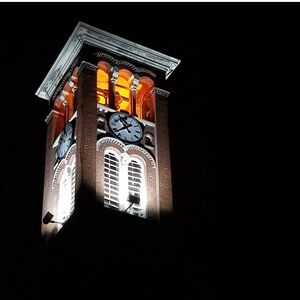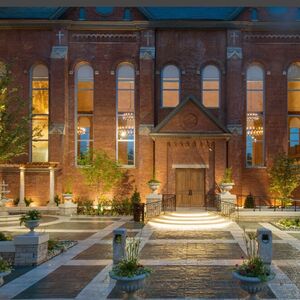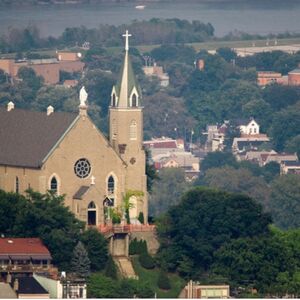
Emma & Diego
Emma & Diego
Holy Cross Immaculata Church
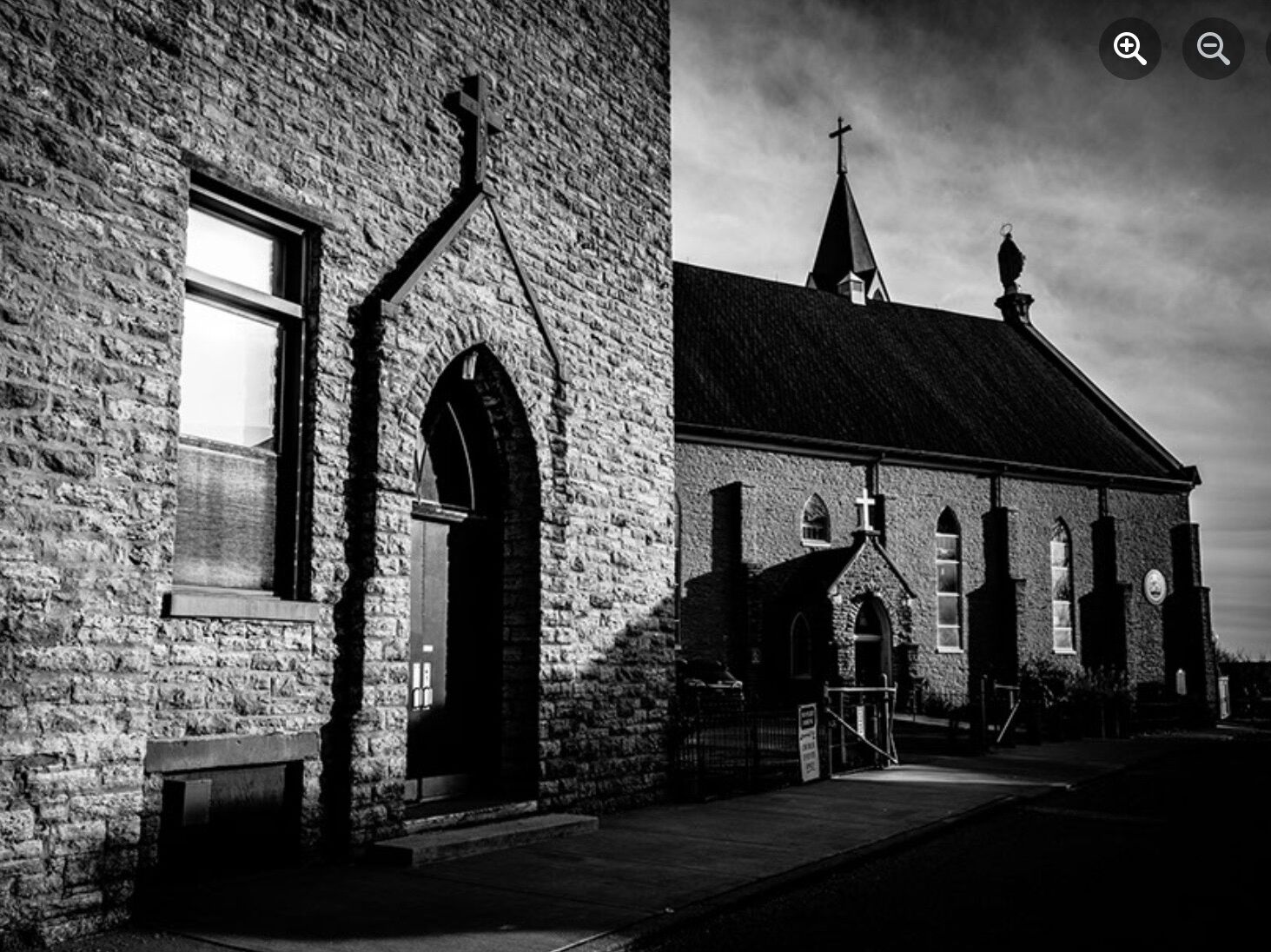
THE HISTORY OF THE HOLY CROSS IMMACULATA CHURCH
The limestone church was built in 1859, just before the American Civil War, for the German congregation in the city's Mt. Adams neighborhood. Archbishop John Baptist Purcell decided to build the church while praying during a severe storm at sea. He promised God that if he survived, he would build a church on the city's highest point.
The nearby Holy Cross parish primarily served Irish immigrants. When the Holy Cross monastery closed in 1977, the parishioners joined with Immaculata to become the Holy Cross–Immaculata parish. The Mt. Adams Preservation Association raised enough funds to commission the restoration of seven paintings by Johann Schmitt. The paintings were mounted over the main altar and side altars between 1863 and 1870. A painted scroll stretches above the main altar across a depiction of the Immaculate Conception. In German, it reads:
O Maria, ohne Suende empfangen, bitte fuer die Bekehrung dieses Landes, Amerika.
(O Mary, conceived without sin, pray for the conversion of this country, America.)
On December 29, 1978, the Immaculate Conception Church, School, and Rectory was listed in the National Register of Historic Places. The school and rectory have since been closed.
In August 2005, workmen began chipping out bricks and glass block where a rose window once stood. The original had been lost in a storm. The new window came from Saint Bonaventure Church, which was closed and torn down in 2003. Fr. Neiheisel and Holy Cross Immaculata pastoral assistant Bill Frantz salvaged a colorful, round, stained-glass rose window that had stood over the altar. Neiheisel then raised $44,000 to have the window reinforced, enlarged with an 18-inch ring of additional glass, and ultimately set into the Holy Cross-Immaculata wall behind a layer of strong, protective glass.
Traditions
Further information: Steps of Cincinnati
The church's statue of St. Patrick.
The Immaculata Church has served since 1860 as a pilgrimage church, where on Good Friday the faithful ascend 85 steps to the church's front door from the neighborhood below while praying the Rosary. An additional 65 steps start at the base of Mt. Adams, with a pedestrian bridge over Columbia Parkway connecting the two paths.
The steps were originally made of wood, but in 1911, the City of Cincinnati helped the church build concrete steps.
Each year in February members of the Ancient Order of Hibernians knock on the church door and ask permission to remove the statue of St. Patrick. The Priest invokes the intercession of St. Patrick. With bagpipes leading the way the six-foot statue of St. Patrick leaves the church and starts his Mini Parade through Mt. Adams.
THE MONASTERY
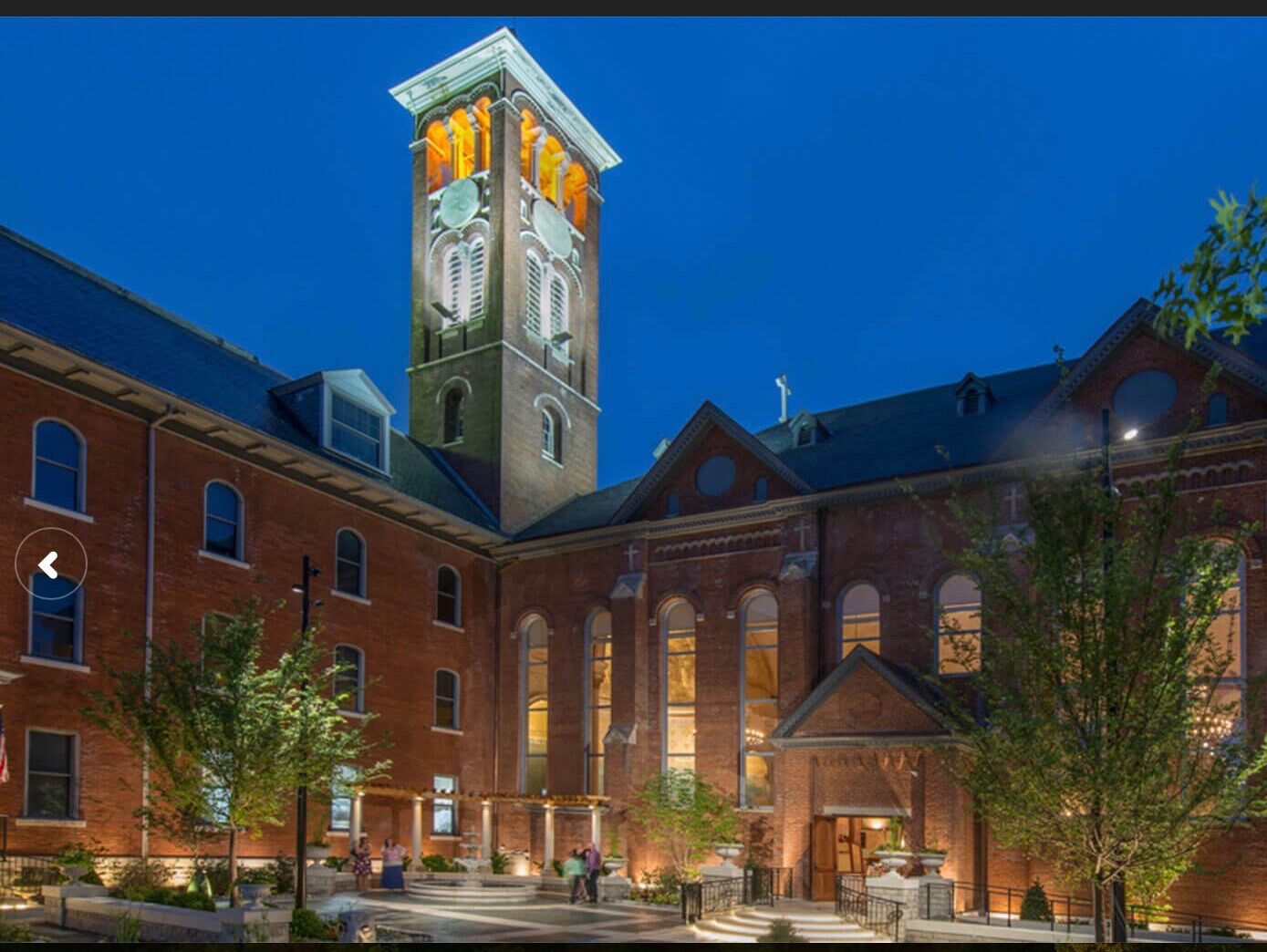
THE MONASTERY
Between 1873 and 1977, the Holy Cross Monastery was a Roman Catholic monastery atop Mt. Adams in Cincinnati, which served a parish of the same name. It was founded by the Passionists, who were first brought to Mt. Adams in 1871 by John Baptist Purcell, the Archbishop of Cincinnati, to run Immaculata Church, founded in 1860.
The first Passionist pastor of Immaculata Parish, Guido Matassi, C.P., immediately saw that the rectory of the parish would be inadequate to their needs as a semi-monasticcommunity. By chance, the building which used to house the Mitchel Observatory (later the Cincinnati Observatory), located only two blocks away from Immaculata Church, was being abandoned due to the effects of industrial pollution.
The terms of the will of the donor of the property which had housed the observatory, however, required the return of the property to his heirs. When Matassi approached them about purchasing the property, they demanded a price which he would not pay. With the encouragement and support of Sarah Peter, daughter of an early Governor of Ohio and a noted convert to Catholicism, the city stepped in and purchased the property from the heir. The following year Matassi signed a 99-year lease with the City of Cincinnati for a building and a property atop Mt. Adams. The Passionists remodeled the structure and added a third floor.
The Church and Monastery of the Holy Cross
The first Church of the Holy Cross, made out of wood, was finished in 1873, standing next to the monastery, but in 1895 it was replaced by a large, permanent structure. It served mostly Irish immigrants. Holy Cross added a grade school in 1891. A weekly novena in honor of St. Gabriel began in 1929.
In 1899 the monastery was condemned as unsafe, and a new edifice was built in the same location. It was dedicated on June 9, 1901. Underneath the monastery was "The Grotto". Immaculata parish had a Holy Week tradition of people praying the rosary while climbing the 125 steps to the church. After "praying the steps", they would then proceed to "The Grotto" at Holy Cross. It was believed that praying there would enhance the possibility of a cure, and there was a wide assortment of crutches at "The Grotto".
Sale and Redevelopment
In 1970 Holy Cross Parish was merged with Immaculata Parish, also located atop Mt. Adams. The combined parish has since been known as Holy Cross-Immaculata. When Holy Cross closed, a statue of St. Patrick was surreptitiously relocated to Immaculata. The Ancient Order of Hibernians annually re-enact St. Patrick's "liberation" and celebrate with a luncheon and Mass at Immaculata.
By the mid-1970s, the Passionist community decided to consolidate their operations to Chicago. The Passionists made the decision to close Holy Cross Monastery in 1976 and the building was sold. After passing through a couple of owners, the monastery is now the corporate headquarters of Towne Properties, a property management company. The church was renovated in 2014 as an event center hosting weddings, receptions, and corporate functions.[6] A chapel garden was installed to complement the newly renovated former church. With the assistance of Towne Properties employees, a statue of an angel was installed the property by parishioners of Immaculata on a pedestal that previously held one of St. Gabriel.

